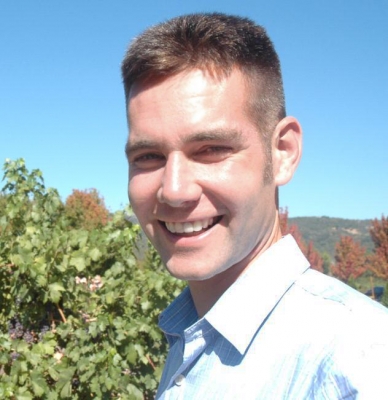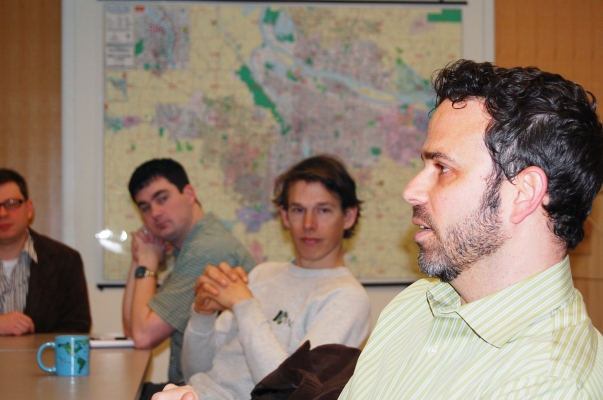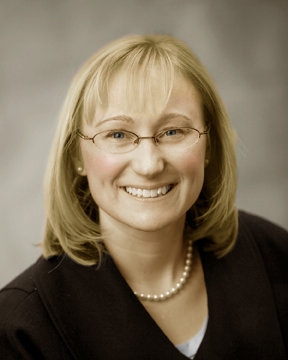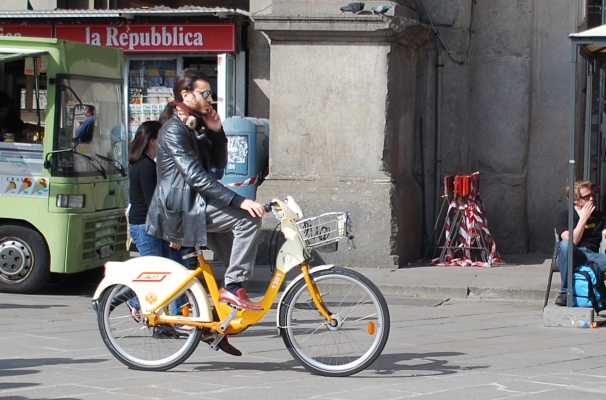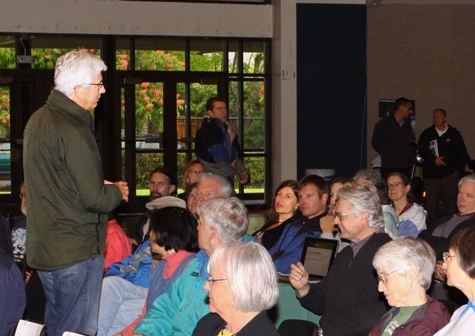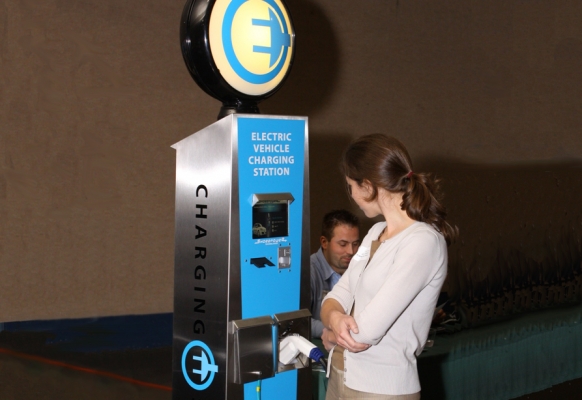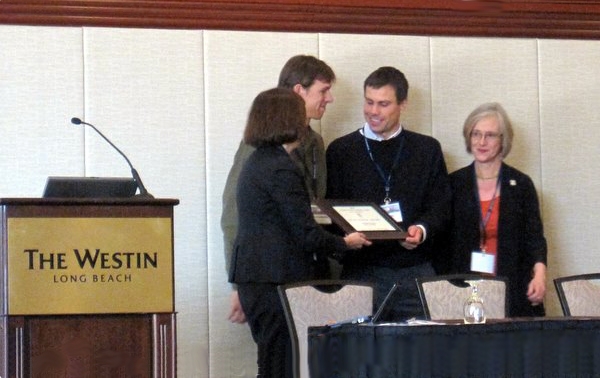As Portland prepares to welcome the first shipment of all-electric vehicles, other countries offer lessons on encouraging the vehicles’ adoption. On April 29, Jianhong Ye provided an overview of China’s electric vehicle promotional programs during a seminar at Portland State University. Jianhong spent 11 years at Tongji University in China earning a B.A., an M.A. and a Ph.D. in urban planning. He is conducting post-doctoral studies at Portland State.
Jianhong’s presentation illustrated how quickly China has moved to transition its public transportation system to electric vehicles (EVs), hybrid electric vehicles (HEVs) and fuel-cell vehicles. The country is now nearing the end of a large-scale electrification shift for public service taxis and buses called the “Ten Cities and A Thousand Units” campaign, a joint project by four public ministries.
Every year since 2009 the program has distributed 1,000 EVs to 10 cities for public-service vehicles. The program is funded through 2012, by which time the Chinese government hopes to have 60,000 EVs in service. Of the vehicles distributed so far, 61 percent are HEVs, 38.5 percent are battery EVs and 0.5 percent are fuel-cell vehicles.
China also promotes private adoption of EVs by offering a national subsidy based on the battery size. As of October 2010, only 2,000 vehicles had been sold through this...
Read moreAs a bicycle and pedestrian planning consultant, it bothered Robert Schneider that no one seemed to know exactly what made people choose to walk or bicycle. So he set out to change that.
Now a doctoral candidate from the University of California Berkeley, Schneider will share what he found out during a seminar Friday in Portland.
Working on projects including the Seattle Bicycle Master Plan, Schneider always sought a solid explanation for people’s transportation choices. “There was a great interest in walking and bicycling, and communities were doing more planning for those modes,” he said. “But there was also a big need for more detailed research and an understanding of what motivates people to walk and bicycle.”
Those motivations make up Schneider’s dissertation research. He developed a five-step theory on how people choose travel modes, noting that walking and cycling could be promoted at each step: awareness and availability, basic safety and security, convenience, enjoyment, and habit.
To develop the theory, Schneider surveyed 1,000 people at 20 San Francisco Bay Walgreen’s stores in 2009 and held 26 follow-up interviews the next year. He found an association between shorter travel distances and both walking and cycling. He also found that people who walk or bicycle report...
Read moreIn many cases, living in suburbia means relying on an automobile for most trips, even short trips to nearby stores. If housing developments incorporated better paths and sidewalks, however, would anyone use them?
Researcher Nico Larco found that people who live in well-connected developments are significantly more likely to walk and bicycle than those in developments only accessible by automobile. He details his findings in this OTREC report.
Larco, an assistant professor of architecture at the University of Oregon, found that people who live in well-connected developments walked to their nearby commercial strips nearly twice as often as did people in less-connected developments. In addition, a greater percentage of residents in well-connected developments reported sometimes walking or cycling.
Despite suburbia’s reputation for large single-family homes, more than a quarter of suburban housing units are higher density. In fact, the suburbs are home to more than 9 million multifamily housing units, with 5 million more projected for the last 20 years. Although these units tend to be near commercial centers, a lack of pedestrian and bicycle infrastructure makes trips using these modes difficult.
For this research project, Larco developed criteria for measuring connectivity in trips taken from, to and through multifamily suburban developments. Studied developments were rated as “well...
Read moreWhen Gabe Klein starts his new job as commissioner of the Chicago Department of Transportation, the lessons of Oregon’s transportation system will be fresh in his mind. Klein, the former director of the District (of Columbia) Department of Transportation, visited OTREC programs and student groups over several packed days in Oregon.
Klein started his tour April 6 in Eugene as an expert in residence with the Sustainable Cities Initiative and LiveMove student group at the University of Oregon. He worked his way up the Willamette Valley with meetings and presentations in Salem and Portland.
On bicycle, Klein toured Eugene’s off-street paths, including pedestrian and bicycle bridges, and the street that will carry the area’s first cycle track.  He met with city and Lane Transit District officials before touring the EmX bus rapid transit system....
He met with city and Lane Transit District officials before touring the EmX bus rapid transit system....
February has come and gone, but students will remember their first engineering lessons as they start their careers. That, anyway, is the hope behind National Engineers Month, an effort to get students excited about engineering.
Each February, professional engineers volunteer to visit kindergarten-through-12th-grade classrooms to describe their jobs, get children participating in problem-solving exercises and having fun while using math and science. And, in one case, showing silly video clips from movies made before the students were born.
That, anyway, was the case at St. Mary’s Academy in Portland, Feb. 22 and 23, where OTREC’s Jon Makler presented on transportation engineering. Asking how people get interested in transportation engineering, he showed a clip from “National Lampoon’s European Vacation” depicting a family stuck for hours in a fearsome traffic circle:
Makler engaged his audience with real-world transportation puzzles that doubled as algebra problems. The students calculated travel times to Seattle on various modes, considering access to airports and train stations...
Read moreOregon governors have had transportation advisers before. Lynn Peterson wants to be something different.
Peterson, an OTREC advisory board member and former Clackamas Board of County Commissioners chairwoman, joined Gov. John Kitzhaber’s administration in March as sustainable communities and transportation policy adviser.
“I’ve always been a transportation advocate,” Peterson said. “But we talked about the need to integrate transportation with housing and economic development and land use.
“By adding ‘sustainable communities’ to transportation adviser, we were basically saying, ‘Listen: as we move through the transportation discussion, we need to consider the health component, the housing component, the overlaps in other areas.’ “
Peterson brings a broad transportation policy background, having earned graduate degrees in both planning and engineering from Portland State University. She worked in transportation planning for both Metro and TriMet, as a transportation advocate for 1000 Friends of Oregon, and also served on the Lake Oswego City Council.
Peterson said she didn’t hesitate to step into a role that places her in the center of potentially contentious...
Read moreOTREC Director Jennifer Dill's recent trip to Europe found people of all ages and walks of life on bicycles, perhaps not surprising given the resources dedicated to bicycle facilities. Photos in the slideshow are from Milan (first four) and Munich (last five).
Check out the bike museum photo of tire concepts: imagine riding to work on springs or corks!
With its major cities clustered along 100 miles of the Willamette Valley, Oregon offers a fertile ground for electric vehicles and their limited range, George Beard of Portland State University said at a recent presentation. But Oregon’s readiness for electric vehicles doesn’t itself put one electric car on the road.
Beard, with Portland State’s Research & Strategic Partnerships, opened the Center for Transportation Studies’ spring Transportation Seminar Series with the presentation “Electric Vehicles: Are we in the Driver’s Seat?” It’s not just the population centers that make Oregon ripe for electric vehicles, Beard said. Automakers and governments have also invested heavily to deploy the technology in the state.
Oregon spends roughly $6 billion per year on gasoline, with nearly all of that money leaving the state, Beard said. Switching to a locally produced energy source could keep more of that money in the state.
Of course, predicting the future is never that simple, Beard said. Drivers unhappy with congestion won’t see that problem disappear because their cars now run on electricity. “Traffic congestion is a real killer,” he said.
“There’s no silver bullet that will solve our mobility problems,” he said. ”You’ve got to have a number of approaches for being able to move people and goods.”
For a technology that doesn’t require foreign oil, the fate of electric vehicles is intertwined with the oil cartels, Beard said. The...
Read moreBy 2020, the Eugene-Springfield area could have 15,000 electric vehicles on the road. In March, regional leaders took a big step toward making sure their communities will be ready.
The Eugene Water and Electric Board (EWEB), University of Oregon’s Community Service Center and the city of Eugene hosted a forum March 30 to discuss the future of electric vehicles. A culmination of a yearlong OTREC-funded project to assess the implications of electric vehicles, the forum identified and analyzed key issues and opportunities for Eugene-Springfield.The event brought together over 30 invited representatives of the city of Eugene, Lane County, local industry and other interested partners to hear three perspectives on the issue.
Speaking at the event were:
- George Beard, Portland State University, Office of Research & Strategic Partnerships
- Art James, Oregon Department of Transportation, Office of Innovation, Project Director, Oregon EV Initiative
- Bob Parker, University of Oregon, Community Service Center
The forum covered key industry developments and regional initiatives, and offered insights into potential impacts to local agencies and potential consumers. EWEB and the City of Eugene are planning for the infrastructure to support the charging of between 12,000 and 15,000 electric vehicles.
In a few months, the city of Eugene hopes to have several public electric car charging stations...
Read moreOTREC researchers at Portland State University won the best paper award at the annual Transportation Research Forum for examining the effects of freeway traffic bottlenecks on costs. Graduate student Alex Bigazzi and Miguel Figliozzi, an associate professor of Civil and Environmental Engineering, submitted the paper for the forum, held in March in Long Beach, Calif.
Traffic flows can break down more or less at random as the freeway approaches its capacity. Although drivers pay a high price for bottlenecks both in their time and fuel costs, earlier models have taken an oversimplified look at how the uncertainty associated with how bottlenecks form, and how long they last, affect time and fuel costs. Without incorporating uncertainty, previous models underestimate the impact of congestion and bottlenecks. The paper, called “A Model and Case Study of the Impacts of Stochastic Capacity on Freeway Traffic Flow Benefits and Costs,” takes into account the range and frequency with which these random or uncertain traffic breakdowns occur.
Research detailed in the paper stemmed from an OTREC project, Value of Reliability. Figliozzi had considered the concept of reliability for years, even using it in his modeling class as an example on how to analyze the impact of uncertainty and combine diverse datasets and models—traffic, congestion, and emissions—into a cohesive model.
In terms of time and fuel...
Read more

